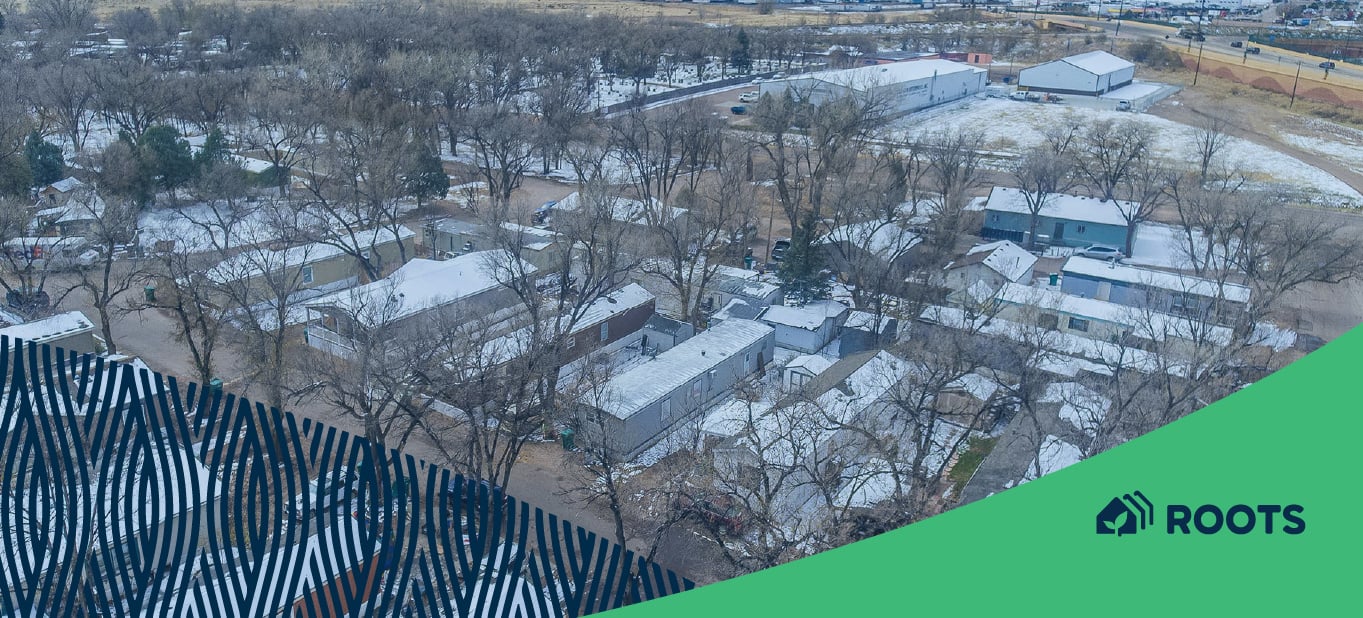Winterizing Your Manufactured Home for Comfort and Efficiency
As the country is facing ice, snow, and freezing temperatures, it’s more important than ever for our residents and communities to be prepared. The...
2 min read
Christine Bachman
:
Dec 5, 2023 2:24:16 PM



Tony Anderson, the Divisional Maintenance Manager for Roots Management Group, offers some sound advice: “Take a walk around your home with a notepad and jot down any potential issues you see that could help keep you dry, warm, and safe this winter while it’s still nice outside”. With over 25 years of invaluable experience, Tony oversees the maintenance staff across all Roots Management Group properties. “Our maintenance team members are here to help by lending tools and giving advice on the best products to help get the job done.

Angie Moss, Regional Manager with Roots Management Group, highlights Tony's role in maintaining community standards and helping homeowners navigate seasonal challenges. “Tony helps us create consistency on how we maintain community and home function and appearance standards. He is a resource for all of our on-site teams for all the physical maintenance of the communities and homes.”

As Winter will be here before we know it, Tony's insights become even more crucial. “Tony helps residents prepare and maintain their homes; his tips are very valuable,” says Angie. Tony shares his extensive knowledge to educate homeowners, guiding them on effectively addressing general and seasonal needs.
Look at the roof, the underbelly, windows, skirting and entrance's. "Fixing wobbly stairs and loose railings are lifesavers when you have icey conditions" says Anderson.
Here are more ways Tony advises to prepare your home for the months ahead.
1. Seal the Gaps:
One of the primary considerations when winterizing your manufactured home is to identify and seal any gaps or leaks. "Drafts can significantly impact your home's ability to retain heat, increasing energy bills". Inspect windows, doors, and other openings for potential drafts. Weatherstripping, clear wrapping for windows, caulking, or draft stoppers effectively seal these gaps and keep the cold air outside.
2. Insulate Your Home:
Proper insulation is crucial for maintaining a comfortable temperature inside your home during winter. Please be sure to look at your walls, floors, and ceilings to make sure it meets the recommended standards. You might also want to consider adding thermal curtains on windows and insulating pipes to prevent freezing. Spray foam or calk is good to use around gaps that lead to the outside. Replacing the skirting panels that have holes in them which is not only good for winter but overall maintenance of your home.
3. Check your thermostat and HVAC System:
Make sure your thermostat is working and properly maintained. Scheduling a professional inspection and maintenance for your HVAC system before the chilly weather sets in is a good idea. Be sure to have any fireplaces checked, and replace or clean all air filters so your system can operate efficiently.

5. Roof Maintenance:
Your roof is crucial in protecting your home from the elements. Anderson suggests inspecting the roof for any signs of damage, such as missing shingles or leaks, and repairing them promptly. Keeping your roof maintained in good condition will contribute to a well-protected home during winter. When you have trees especially, you need to keep an eye on the branches so they do not scrape your homes roof. Your roof should be inspected each year, and if you see any cracks or seals that are broken you can add sealants to help keep the warm air from escaping through the roof.
6. Protecting Water Lines:
Frozen pipes can result in considerable damage to your home. Roots Management Group recommends insulating water pipes with heat tape to protect your pipes and disconnect and store garden hoses to protect outdoor faucets.
7. Check your windows:
Look for cracked or broken window seals. This is a huge problem for keeping the heat inside where you need It. Replace any broken windows and consider wrapping them with the clear cellophane designed to seal your window to keep the cold air from getting in.

Winterizing your manufactured home is a proactive approach to ensure comfort, energy efficiency, and protection against the challenges of winter weather. Following these recommendations from Roots Management Group, you can enjoy a cozy, well-maintained home throughout the colder months. Taking these steps not only enhances your living experience but also contributes to the long-term durability of your manufactured home.


As the country is facing ice, snow, and freezing temperatures, it’s more important than ever for our residents and communities to be prepared. The...